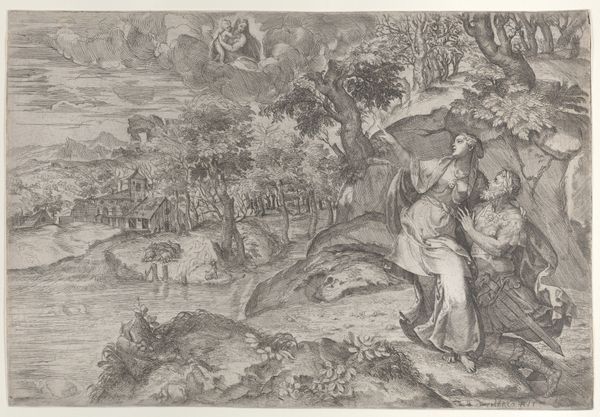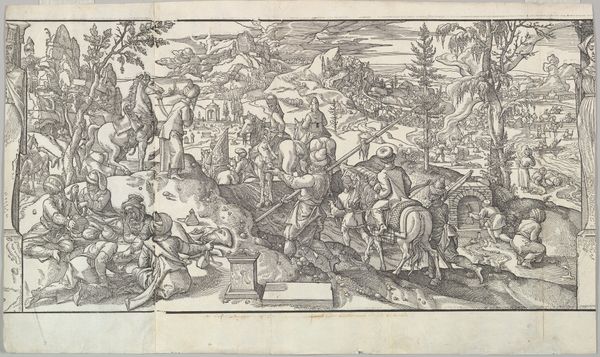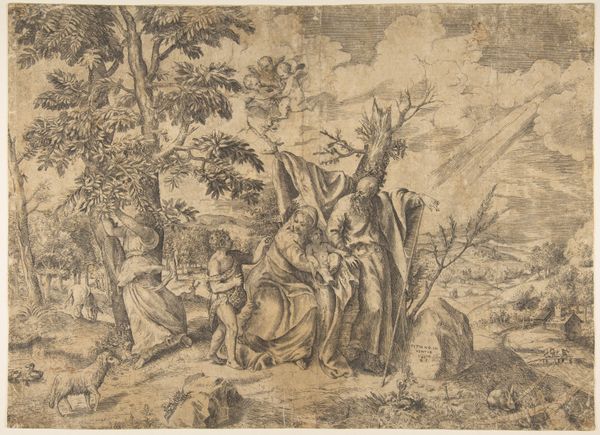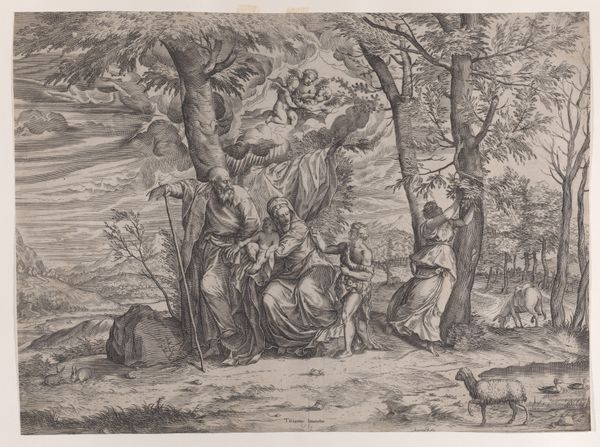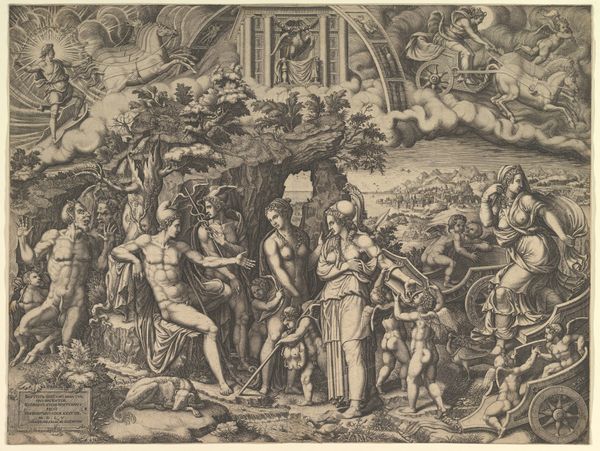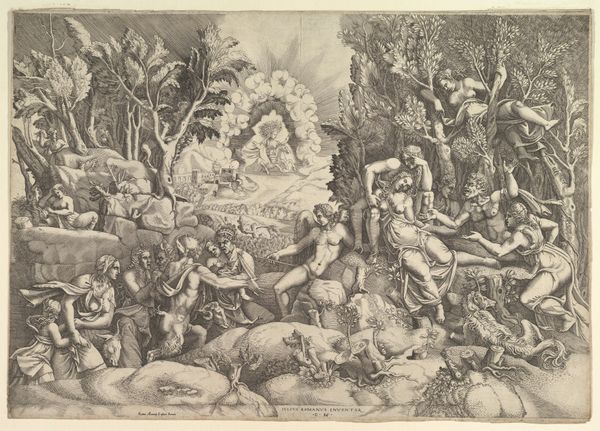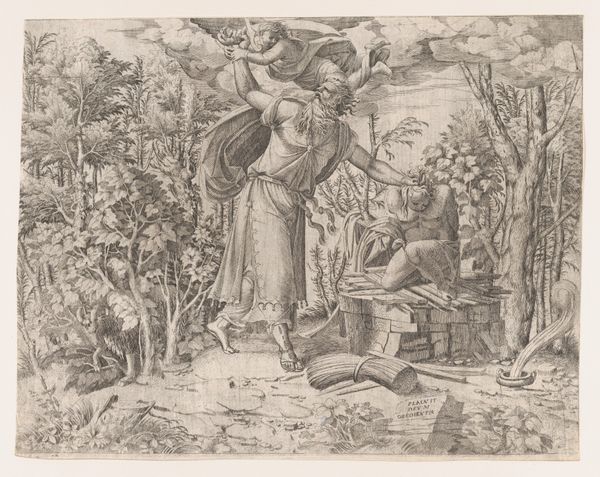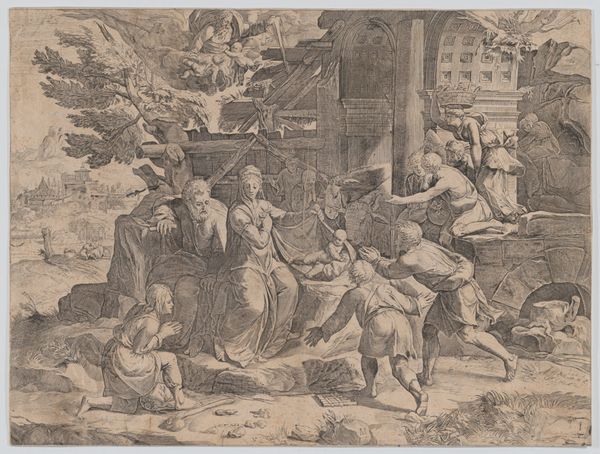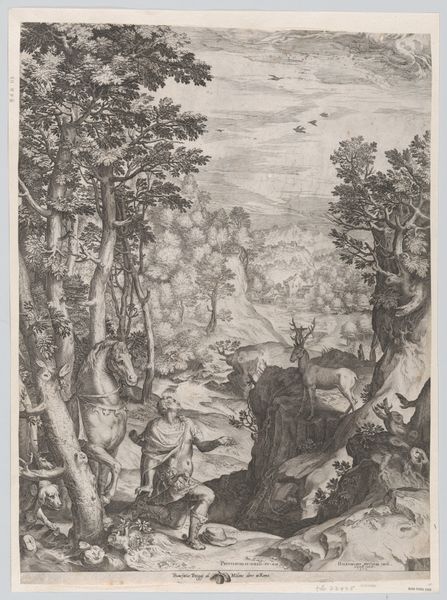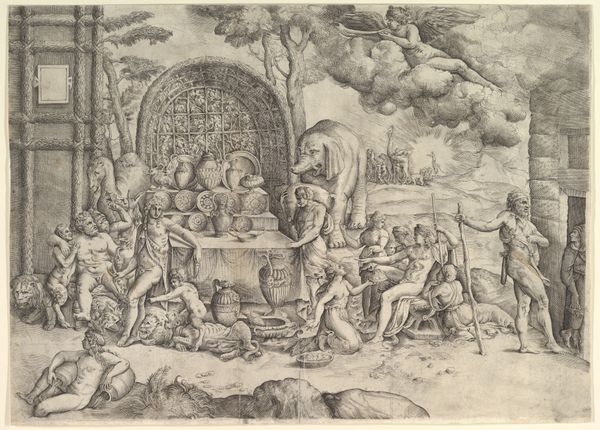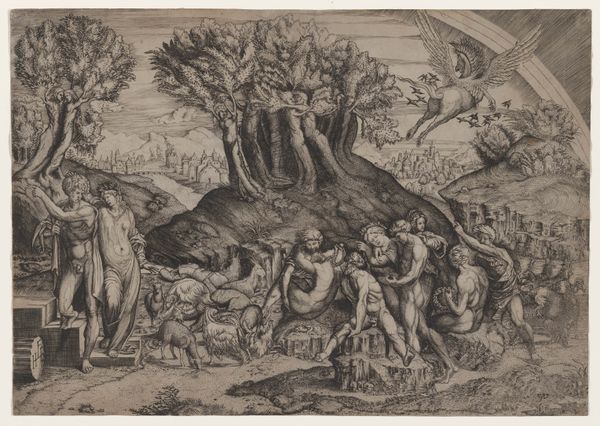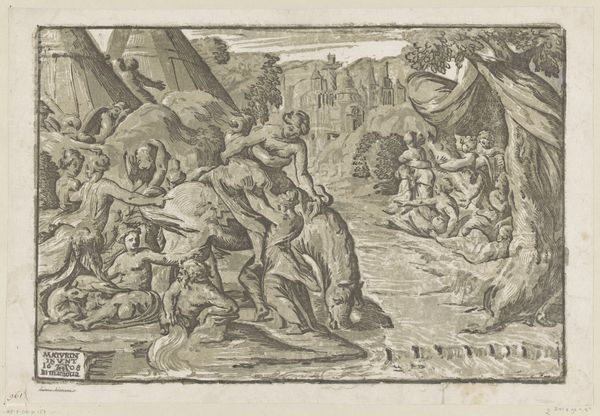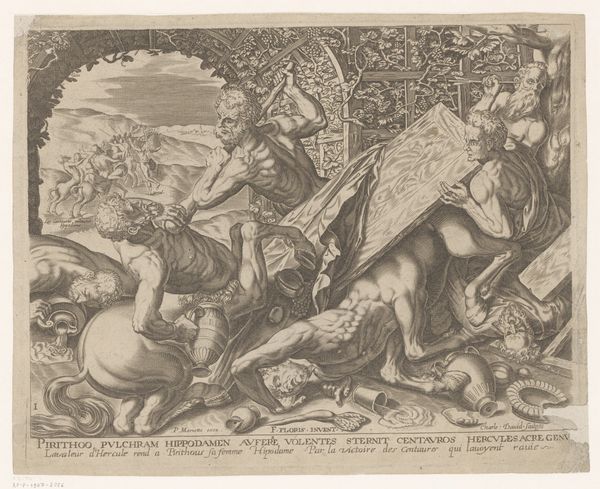
print, etching
#
allegory
# print
#
etching
#
landscape
#
mannerism
#
history-painting
Dimensions: 427 mm (height) x 644 mm (width) (bladmaal)
Curator: This etching, dating from 1570 to 1580, is attributed to Giovanni Paolo Cimerlino. It is called “Døden som fuglefænger,” or "Death as a Bird Catcher.” Editor: What strikes me immediately is the stark contrast in textures – the smoothness of the figures against the scratchy, almost frantic lines defining the landscape. There’s a real tension in the materials used here. Curator: Precisely. Notice how Cimerlino employs meticulous, rhythmic hatching to articulate form and shadow. Observe the landscape, built from layered, repetitive strokes that almost vibrate with an internal logic. The composition itself is carefully orchestrated. Editor: Speaking of logic, the composition certainly emphasizes labor—the production of the print itself and the depiction of human pursuits within the landscape. We see figures engaging in various activities, some carefree, others seemingly oblivious to the skeletal figure of death emerging from the arched doorway. Consider the act of printmaking then—etching lines into metal, laboriously inking and pressing, only to create this narrative about human activity. It’s quite poignant. Curator: It's a very Mannerist sensibility at play, isn’t it? The ambiguity between beauty and horror, serenity and threat. It suggests a world teetering on the edge of awareness, with these figures absorbed in their daily lives as mortality encroaches. Consider the allegory and moralising aspect; a commentary on our blindness, maybe? Editor: Indeed, an interesting duality is expressed through material contrast; the delicate lines creating images of inevitable decay. How does the medium—the act of mechanically reproducing an image—alter our perception of its subject, particularly when that subject is death? Is it simply another commodity for consumption? Curator: A profound question. Perhaps the reproducibility is intended as a form of mass education, a visual memento mori for a wide audience. This distribution method allowed more access to contemplation around mortality than if this were a single painting hung in the church. Editor: It does encourage a dialogue about labor, skill and social mores that expands on simply “vanitas.” I appreciate how that element of craft invites contemplation of mortality through material form. Curator: I see it rather as how the structure directs our attention and engages with us. Overall, an incredibly evocative study, whatever angle we are taking.
Comments
No comments
Be the first to comment and join the conversation on the ultimate creative platform.
